Budbreak 2025 Arrives a Week Later than 2024, Showing the Impact of Our Late Rain
As the last few sprinkles of what may be the last serious rain from the 2024-25 winter wind down this afternoon, it feels like an appropriate moment to highlight that the vineyard is also making a visible transition from winter to spring. After last week's warm, sunny days, we've started to see budbreak in our early-sprouting varieties and at the tops of our hills. Below are Syrah (left) and Viognier (right):
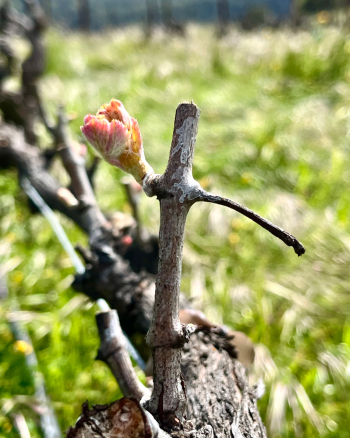
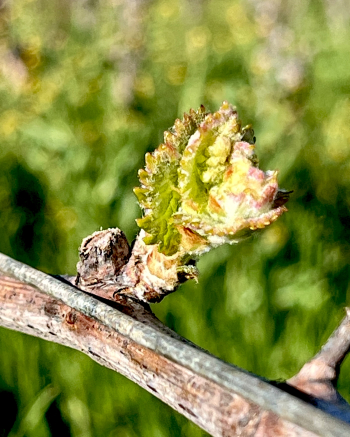
Although overall we're only at about 70% of normal rainfall for this point in the winter, when it has come has been pretty close to ideal. We got a nice dose of early season rain, which got the cover crop sprouted. December cleared up but the weather stayed relatively warm, which encouraged that cover crop to grow and allowed us to get our sheep into the vineyard earlier than most recent years. January was sunny and cold, with 18 below-freezing nights. As the calendar turned to February and we started getting seriously worried about lack of rain, the clouds rolled in and the skies opened up, and February and March have been wet, with 15 days with measurable rainfall totaling 129% of the precipitation we'd expect in these two already-rainy months:
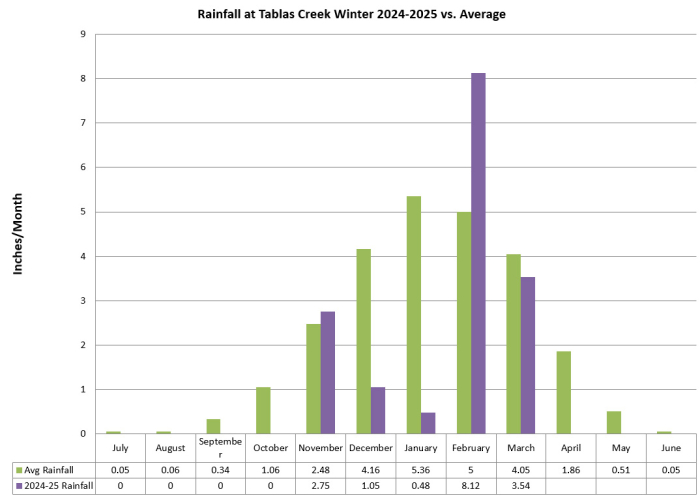
The net result has been exceptional cover crop growth, to the point that you often couldn't see our sheep (or sheepdogs) when they entered a new block. All that cover crop growth will be returned to the soil either through the flock's manure or as we mow, disc, or crimp the grasses into the soil:

Budbreak, as you probably guessed from the name, is the period when the grapevine buds swell and burst into leaf. It is the first marker in the growing cycle, a point when we can compare the current season to past years. Upcoming markers will include flowering, veraison, first harvest, and last harvest. Like each of the stages, budbreak doesn't happen for every grape simultaneously. It usually starts in Viognier and Grenache. Other early grapes like Grenache Blanc, Vermentino, Cinsaut, and Syrah tend to come shortly thereafter, followed by Marsanne, Tannat, Picpoul, and Mourvedre a week or two later. Finally, often three weeks or more after the earliest grapes sprouted, Roussanne and Counoise get in on the game. As I write on March 31st, we've seen budbreak in all our early varieties and the top-of-hill blocks of the middle varieties, but are still waiting for the bottoms of the hills and for later grapes like Counoise (below), which doesn't look any different than it would have in January. But that sky and that landscape could only be March:
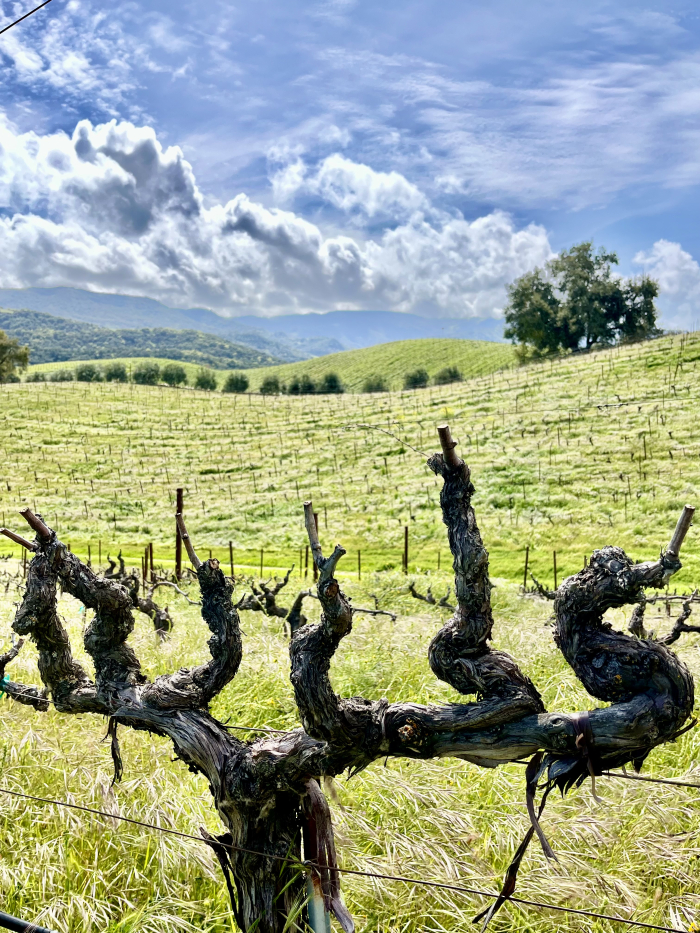
This year's last-week-of-March beginning is about average for us. Drought years tend to be early, since dry soils warm up faster than wet soils, so it's interesting that we're a week or so later than we were in the significantly wetter year of 2024. That suggests that, at least as far as the vineyard is concerned, we're not in drought conditions. For an overview, here's when we saw first budbreak the last dozen years:
2024: Mid-March
2023: First week of April
2022: Mid-March
2021: Last week of March
2020: Last week of March
2019: Second half of March
2018: Second half of March
2017: Mid-March
2016: Very end of February
2015: Second week of March
2014: Mid-March
2013: First week of April
Further evidence that our late rainfall has helped keep soils wet and therefore cool is the presence of the edible water-loving California perennial miner's lettuce across much of the vineyard. This was a plant that the hopeful gold rush miners ate to ward off scurvy:
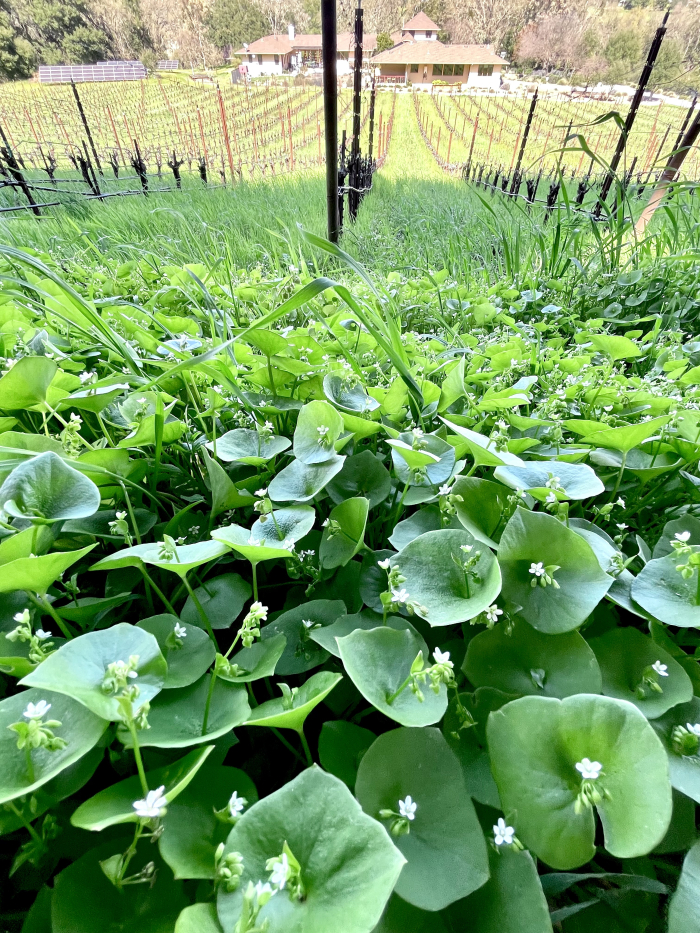
In addition to the variation by variety, there's variation by elevation and vineyard block. Grenache is a good example. I took the following three photos as I walked up our biggest hill on the edge of a Grenache block that stretches from the hill's top to its bottom. The first photo is from the bottom of the block, where cool air settles at night. You can see the buds swelling, but no leaves yet:
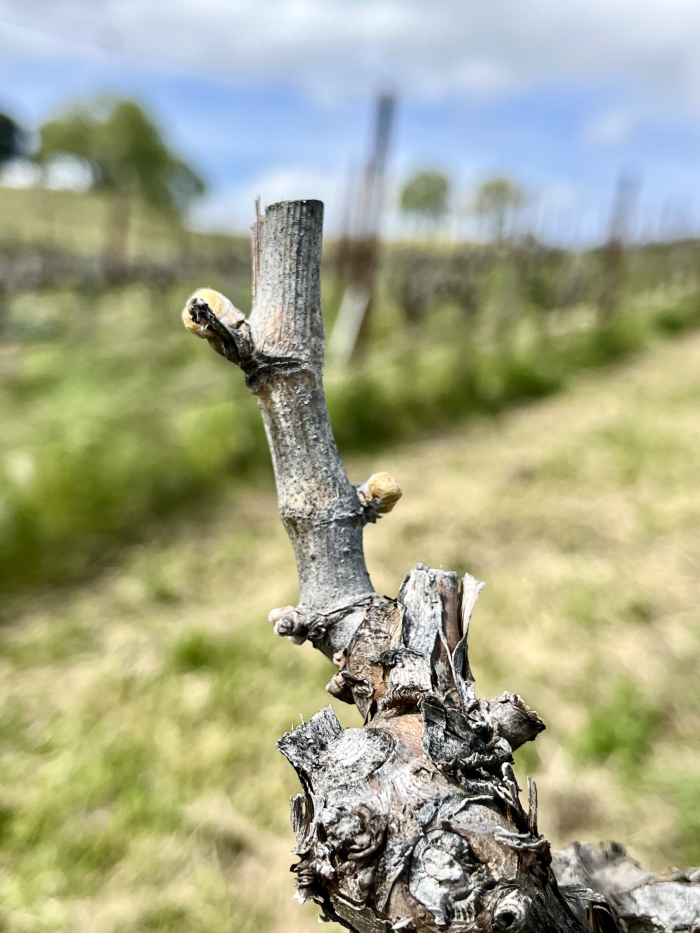
About halfway up the hill, you see the first leaves emerging:
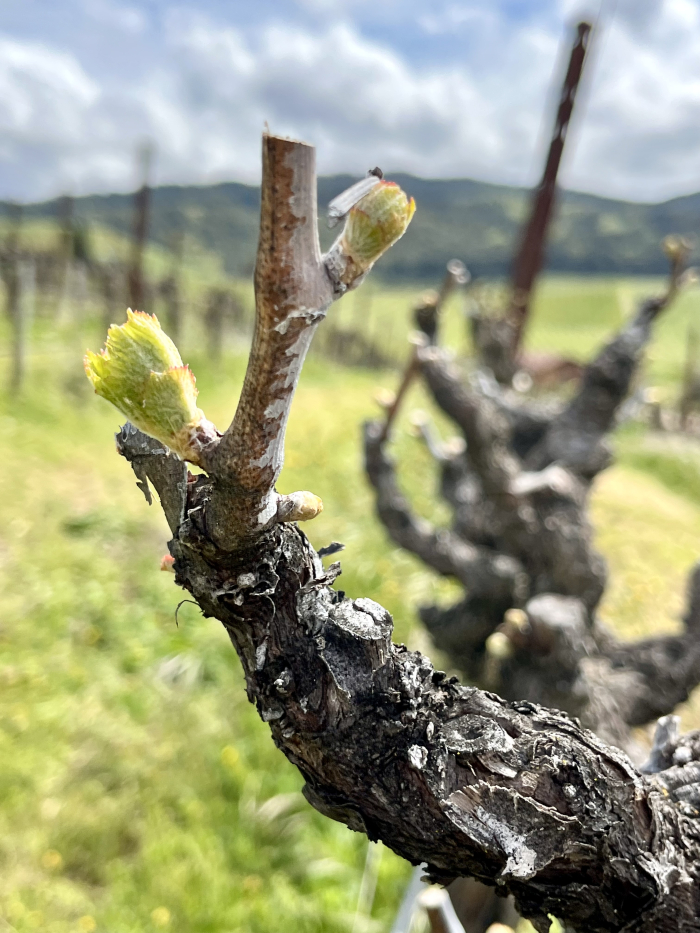
And at the top of the hill, nearly all the buds are out:
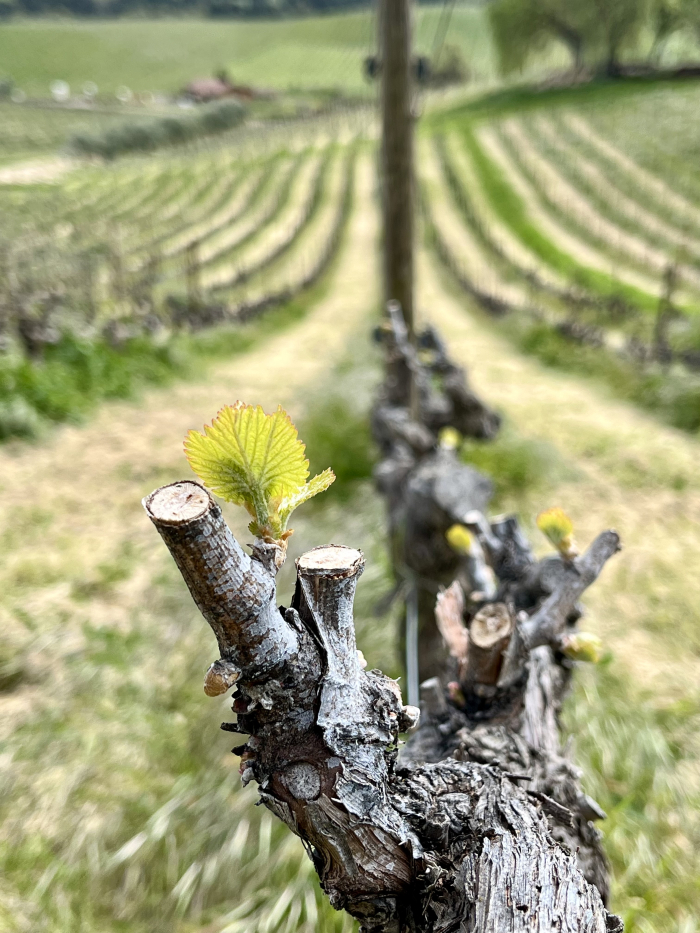
Now our worries turn to frost. Before budbreak, the vines are safely dormant, and a freeze doesn't harm them. But once they sprout, the new growth is susceptible to frost damage. April frosts cost us roughly 40% of our production in both 2009 and 2011 and a May frost cost us 20% of our production in 2022, with Mother's Day marking the unofficial end of frost season. So, we've still got more than a month to go before we can relax, and I'm thankful that this storm that's just passing through was a relatively warm one with origins in the South Pacific instead of one of the late-season winter storms that sweep down from Alaska. It's typically in the aftermath of the passage of a cold front that we see damaging frosts. We have our frost sprinklers and our mobile fans ready to go, for when they're needed:
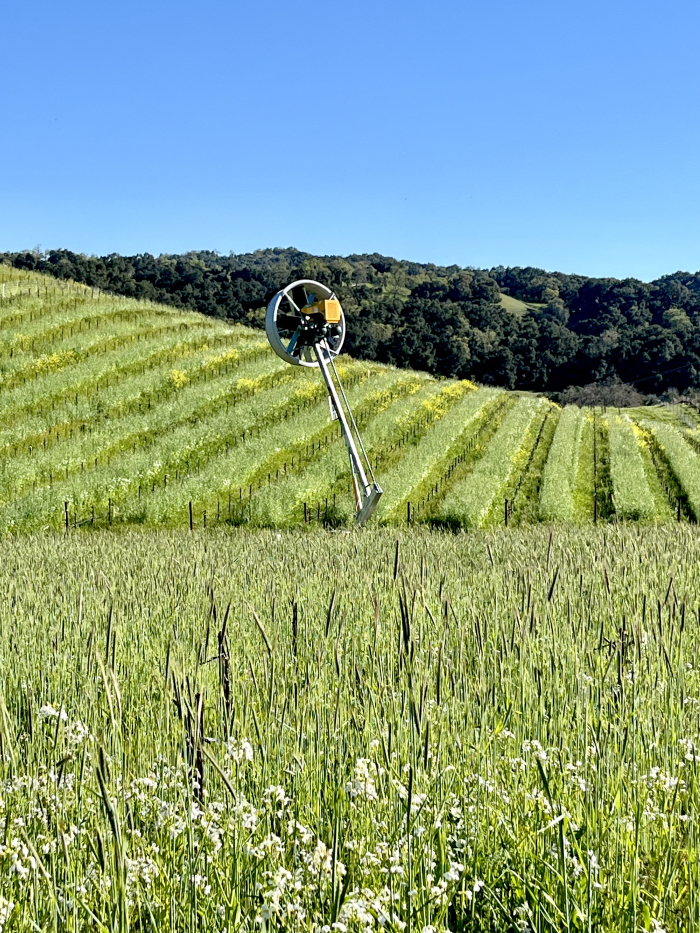
That said, there's nothing particularly scary in our long-term forecast. But there's a long way to go.
Meanwhile, we'll enjoy the rapid changes in the vineyard, and the hope that always comes with the emergence of new buds. Please join me in welcoming the 2025 vintage.

